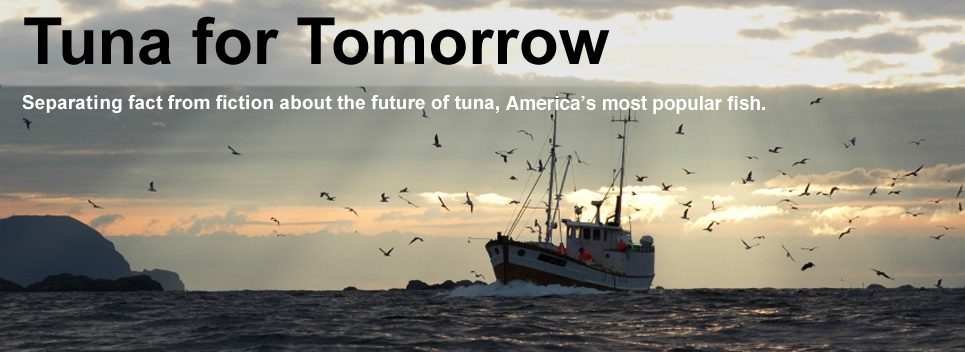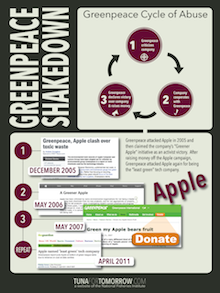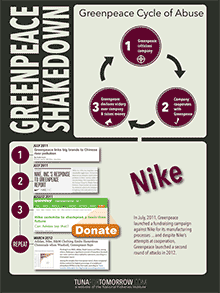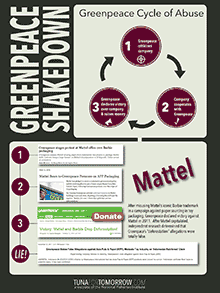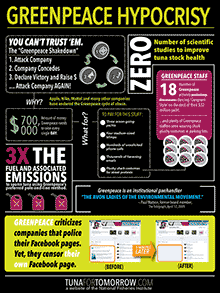A word of friendly advice for Greenpeace: you might be more successful at raising money if you don’t alienate reasonable people with vitriol and violence.
Case in point, Greenpeace recently launched a mobile phone app that encourages players to kill as many fish and sea turtles as possible. And not just kill them, but slash and decapitate the innocent sea creatures with bloodthirsty glee.
Of course, Greenpeace says the point of this make believe game is to raise awareness of fishing practices it deems insensitive, even though one Greenpeace web developer admits, “You feel a bit wrong playing it.” How about a lot wrong? A barbaric game complete with axes, multi-blade weapons, and other barbaric instruments of cruelty not only encourages insensitivity — it delights in violence uncharacteristic of anyone who truly cares for the oceans.
But using disturbing tactics is not new for Greenpeace. It has repeatedly used grisly and violent images in its fundraising campaigns and has a troubling habit of gratuitously exploiting children’s cartoon characters in its endless quest for more money.
What explains the curious fixation with grisly violence? That’s all Greenpeace has to make its case. The science is against them. Greenpeace’s preferred fishing method for tuna — pole and line — would require a massive fleet of small diesel powered boats producing a carbon footprint 300 times larger than the over 400 year-old practice of using fish aggregating devices to attract schools of tuna. Without the facts on their side Greenpeace has to rely on shock and awe to grab the attention of potential contributors. The comparative success of mainstream environmental organizations shows that Greenpeace’s adolescent antics, harassing phone calls, and unrelenting panhandling are wearing thin even with own base.
Greenpeace’s new “killer app” is more proof that its radical activists don’t know the difference between edgy and over the edge.


